Artificial lighting used in the workplace must meet the requirements of industrial need and occupational health. Ideally, its quality should be close to natural. Therefore, the calculation of natural and artificial lighting when installing workplaces and industrial workshops is carried out in strict accordance with regulatory requirements. But first, let's figure out what it is. After all, artificial lighting is used in production in most cases.
There are several types of it, each of which has its own purpose. In accordance with the classification, the lighting can be working, emergency, evacuation or security. Its systems can be general, local or combined. Each type has its own calculation of artificial lighting.
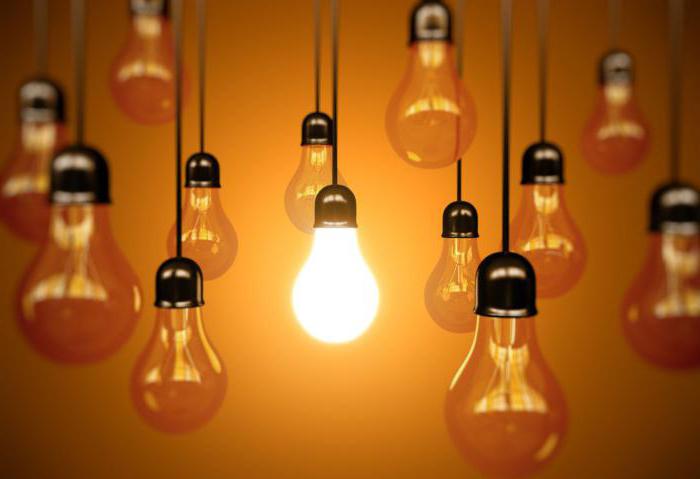
What is it like
In the case of general lighting, the system applies to the entire room. Moreover, it can be both localized and uniform. The latter type is mainly used in workshops with operations of the same nature, having a low accuracy class. At the same time, the density of jobs in such a room is considerable.
Local lighting is equipped with production lines, where various types of work are carried out. It is also used in specific places when it is necessary to create a targeted stream of light or the presence of dimming.
Local lighting is intended only for the work surface. It is also divided into stationary (for example, on a production line for quality control) and portable. The latter is necessary for a temporary or local increase in visibility in certain areas (if repair or inspection is necessary).
All lamps and devices used to create local lighting must comply with safety standards and be convenient to use. Keeping track of this is the responsibility of the labor protection service.
The use of exclusively local lighting is strictly prohibited. And this is no coincidence. The reason for it is the strong uneven level of illumination of the working surfaces. Serious consequences of this are rapid eye fatigue and nervous disorders. Local lighting at the factory can carry only an auxiliary function.
Combination is called such lighting, which combines elements of the general and local. Use it when you need to concentrate the flow of rays and avoid sharp shadows. Such lighting is provided for work that, according to visual parameters, has I-VIII precision bits.
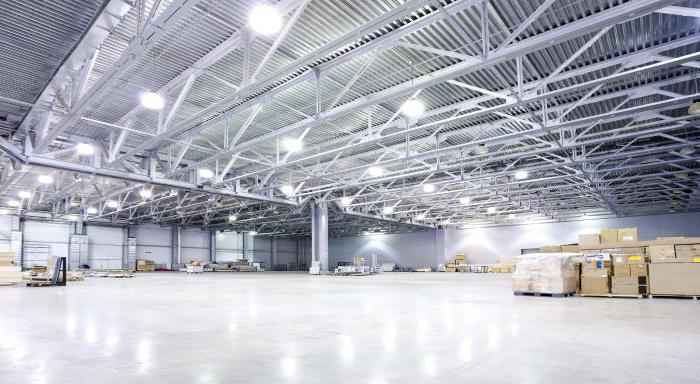
Sources of light
In industrial premises, its main sources are either incandescent lamps or a variety of gas-discharge devices. Each of the mentioned types has its pros and cons. For incandescent lamps emitting thermal radiation, the magnitude of the light output is 10-15 lm / W.
It is a source of continuous spectrum. Most of it has infrared rays, least of all - green and blue shades. Therefore, it is more difficult to distinguish colors under such lighting. The disadvantages of these lamps are a short service life, low efficiency, the red-hot surface of the bulb. Their advantages are compactness, simplicity, the ability to operate in almost any environment and a wide selection of types and capacities.
They can be vacuum, gas-filled, etc.
Gas discharge lamps, which are mercury, fluorescent, high pressure and so on, are more economical. The light emitted by them is closer to natural. The surface of the flasks is cold, with their help it is easier to achieve high illumination. Color rendering has a wider spectrum, which is important in an industrial environment to determine the quality control of raw materials and finished products.

What is their advantage?
They are almost three times more economical than incandescent lamps, due to the longer service life. Their disadvantages are color ripple, glare, noise during operation, high cost of procurement and installation. The latter factor is compensated by the long term of use.
Open gas discharge lamps are prohibited to operate, they must be protected from ripple harmful to the eyes.
These days, these lamps are produced in different types. LD (this designation of fluorescent lamps) give a bluish tint. The spectrum of their study is close to the spectrum of clear sky. LDCs (as the variety with improved color rendition is designated) resemble the previous ones, but they better “translate” the warm tones of the spectrum. Lamps like LE are closest to the natural rays of the sun. LB - white, giving a slightly purple tint. There are also lamps LHB (cold white) and LTV - (warm).
The bright color of fluorescent lamps is most suitable for use in production. A warm shade is in demand in the staff recreation rooms. In general, their purpose is to compensate for the lack of natural light. This applies to rooms with windows facing north, darkened trees and neighboring buildings, basements, etc.
Arc mercury lamps belong to the class of high-pressure luminaires. Given their inherent cost-effectiveness, it is advisable to use them for general supervision in workshops with work that does not require a special accuracy class, in spacious rooms with high ceilings, as well as for lighting unloading and loading areas.
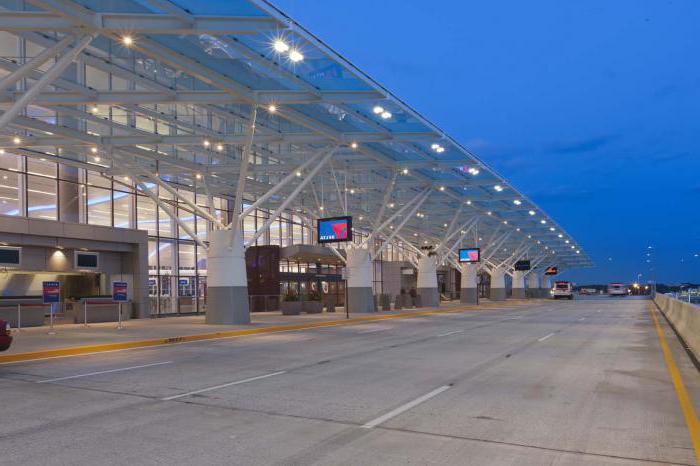
What are the lights
Their components are directly a light source and fixtures. The purpose of the latter is to redistribute the flow of rays, protect the eyes, prevent damage to the device and the ingress of dirt on it. Depending on the direction of the emitted stream, the lamp can be direct and reflected light. In the first case, 80 or more percent of the rays fall on the working surface. In the second - the same part enters the space above the light source - on the walls and ceiling.
In terms of protection from environmental factors, luminaires can be open, dustproof, moisture-proof (usually from water from above). Special lamps are also available, which can be sealed and used for immersion in a liquid medium or explosion-proof - for work in fire hazardous areas. Regulatory requirements for their safety are spelled out in the relevant standards.
Lighting Standards
Legislatively established values of illumination are the minimum permissible for different types of premises - industrial, residential, public, auxiliary, as well as open spaces, industrial areas and railways. It is on them that the calculation of artificial lighting is based. The minimum indicator depends on the type of visual work, the background and its contrast with the object. In this case, one should take into account the type of lighting (combined or general), the type of its sources.
By standards, any work belongs to one of 8 categories, and most of them, in turn, consists of four sub-categories, denoted by letters from A to G.
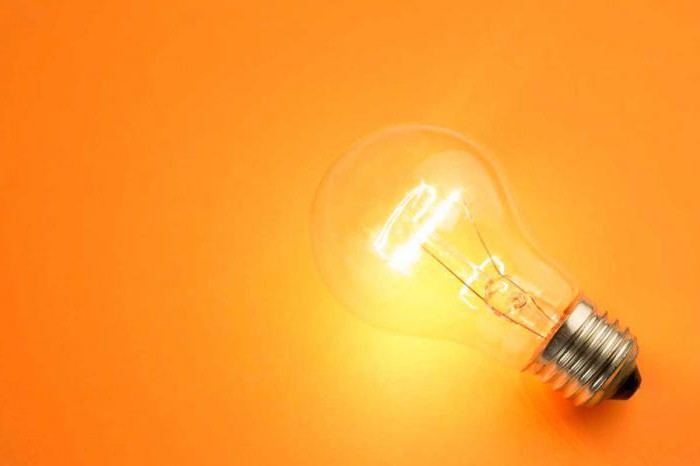
Other types of lighting
Emergency lighting is the lighting whose purpose is to provide the ability to continue working in cases of power outages. It is installed in places where, in the absence of light, fire, explosion, poisoning or a violation of technology are possible. This applies to boiler rooms, compressor rooms, furnace compartments, etc.d.
The purpose of emergency lighting is clear from its name. It is installed in the places intended for passage, on stairwells and in other evacuation zones.
Security lighting is used at night to monitor the territory. Usually a part of emergency or working lighting fixtures is used as it.
How lighting is calculated
In specific production conditions, the need usually arises to either calculate the artificial lighting of the premises for compliance with labor protection standards, or develop a new system for a specific type of work. In the first case, the actual level of illumination is measured and compared with the standard.
When designing a new source, they are determined with the lighting system, the type of source, set the required illumination in accordance with the standards and calculate the number of lamps or luminaires necessary to ensure it.
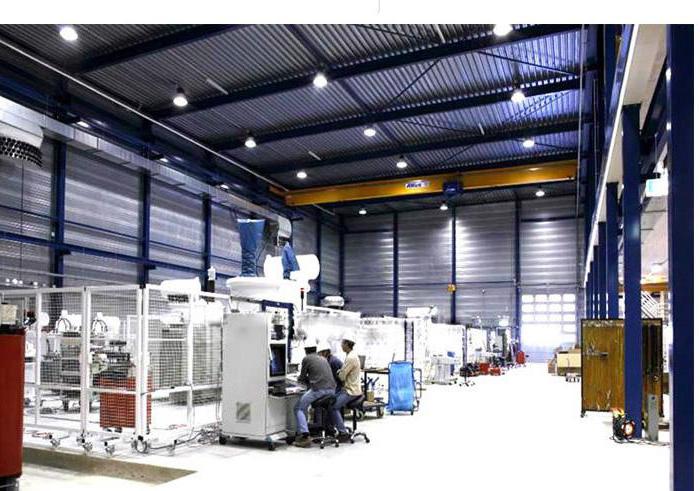
Methods for calculating general artificial lighting
There are three main methods: power density, spot, and the method using the coefficient of utilization of the light flux.
The latter is used in general cases when it is required to calculate the artificial lighting (uniform) of any horizontal surface, and it is intended to use lamps of various types. Its essence is in finding a coefficient specifically for a particular room with given parameters and reflective properties of the materials used in the decoration.
The disadvantages of the method are not too high accuracy of the calculation, as well as its complexity. It is mainly used to determine indoor parameters.
The calculation of artificial lighting using the method of specific power is performed in cases where it is necessary to preliminarily determine the parameters of the designed lighting system.
Other methods
The point method has found its application in the calculation of both general and local localized lighting. Moreover, it is used for different locations of the working surface.
According to this technique, the illumination of the plane at any of the calculated points is determined. Moreover, the calculation is performed separately in relation to each source. This method is very time-consuming and requires attention and accuracy from its application.
There are other methods for calculating artificial lighting. For example, combined, which is used in case of impossibility to determine the required level using one of the previous methods.
In individual rooms (for example, on stairs, in corridors), the power of the lamps used is set by direct standards.

Calculation of artificial lighting. Example
Consider how lighting is calculated using the luminous flux utilization method. The basic formula in this case looks like this:
F = (Emin x S x Kz x z) / (n x η), where:
- F is the estimated luminous flux of one or more lamps of the light source,
- Emin - standard illumination (lux),
- KZ - the safety factor provided for depending on the pollution of the room and the type of lamp,
- z - correction factor, the purpose of which is to take into account the average illumination of the room, exceeding the standards,
- n is the number of fixtures,
- S is the area of the premises in square meters,
- η is the coefficient of use of the light flux (this is a reference value, taken depending on the type of lamp, the size of the room and the reflection coefficient of the materials from which the walls, floors and ceilings are made).
All normative and reference figures can be obtained from the corresponding tables, which contain the rationing and calculation of artificial lighting.








